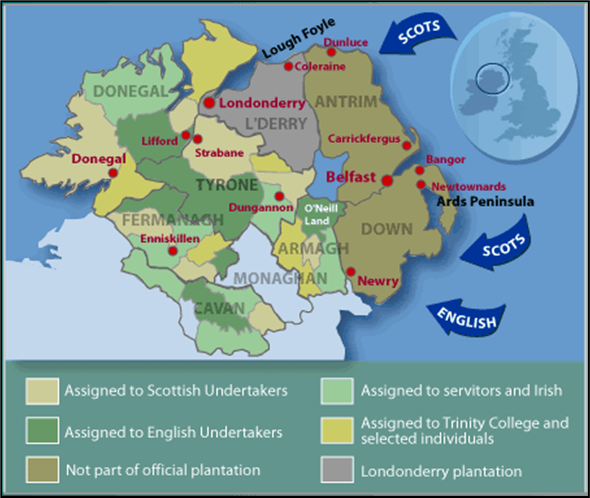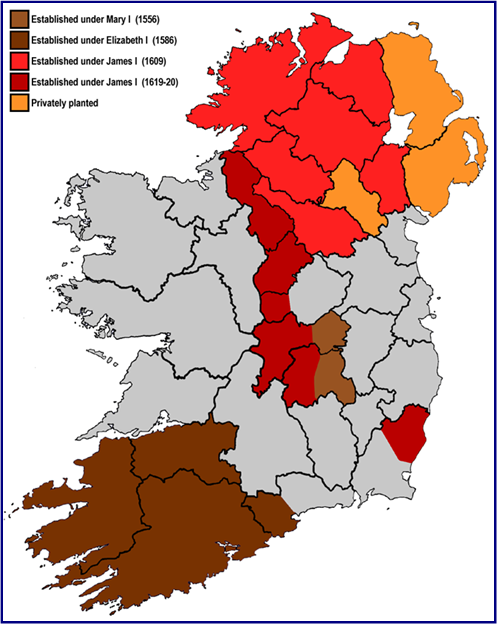


xxxxxAs we have seen, during her reign Elizabeth I had had to deal with three major rebellions in Ireland. Her army had met with defeat at the battle of Yellow Ford in 1598, and then her favourite, the Earl of Essex, had failed miserably to curb the revolt of Hugh O’Neill, the Earl of Tyrone. It was not until six days into the reign of James I, in fact, that O’Neill was forced to surrender, and Ireland was reduced to obedience. Under the Tudors the seizure of land had been piecemeal. Under James I it became organised. In 1610 he began the “Ulster Plantation”, settling Protestants in areas in the North which had been devastated by long years of war. And to this settlement in six of the nine counties of Ulster was added a large number of Scottish immigrants. Meanwhile, alongside this land policy went a rigorous political regime meant to keep the Irish subdued, but it did not last. As we shall see, the inevitable rebellion broke out in 1641 (C1) and this contributed -
THE ULSTER PLANTATION 1610 (J1)
Acknowledgements
Map (Plantation): from www.alternatehistory.com. Map (Ireland): licensed under Creative Commons – commons .wikimedia.org/wiki/File:Plantations-
xxxxxAs we have seen, Elizabeth I had been plagued with troubles in Ireland. There were three major rebellions during her reign, and in 1598 at the battle of Yellow Ford her army had suffered a serious defeat at the hands of the Catholics, led by their champion Hugh O'Neill, Earl of Tyrone. This resulted in the despatch to Ireland of the Queen's favourite, the Earl of Essex, but his expedition proved a dismal failure. He made an unfavourable truce with O'Neill, and, deserting his post, returned home in disgrace. His replacement, Lord Mountjoy, fared much better. He defeated the Catholics, together with a Spanish force which had come to their support, and O'Neil gave himself up in March 1603, six days into the reign of the new monarch, James I.
xxxxxO'Neil was pardoned, but stripped of much of his power, and, with his flight to Rome in 1607, together with Earl of Tyrconnell and their families and retainers (the so-
 xxxxxUnder the Tudors the seizure of Irish land had been piecemeal, a by-
xxxxxUnder the Tudors the seizure of Irish land had been piecemeal, a by-
xxxxxAnd to this "colonial" settlement in six of the nine counties of Ulster was added a larger, unsponsored migration of Scots, settling for the most part in the coastal regions of two of these counties, Down and Antrim. There had always been a movement between Scotland and Northern Ireland, but now it became largely one way. Thus was sown the seeds of future conflict. It is estimated that the percentage of land owned by Roman Catholics in 1641 was 59%, and that dwindled to 22% by 1688 and 14% by the year 1703.
 xxxxxAlongside this land policy went a rigorous political take-
xxxxxAlongside this land policy went a rigorous political take-
J1-


